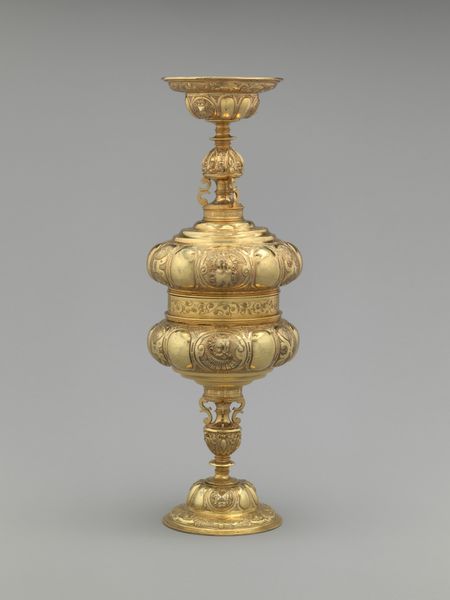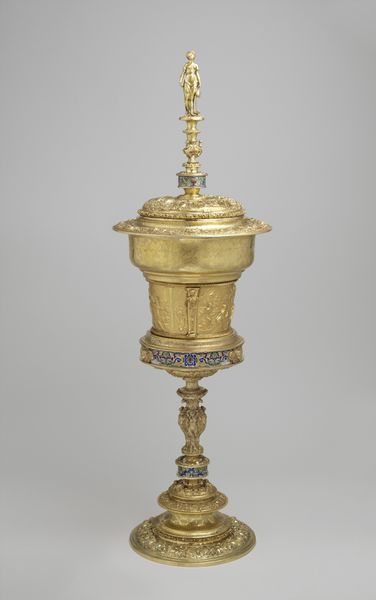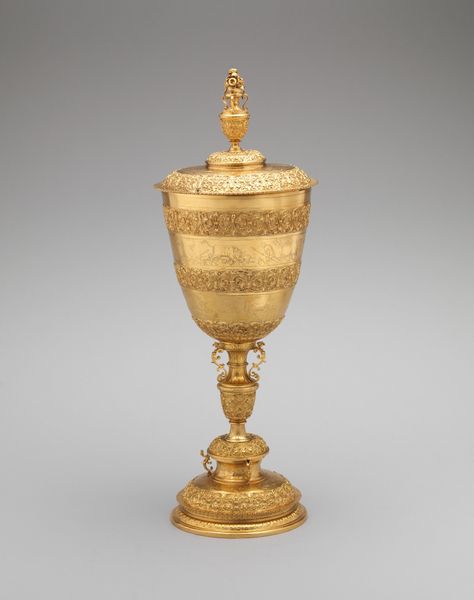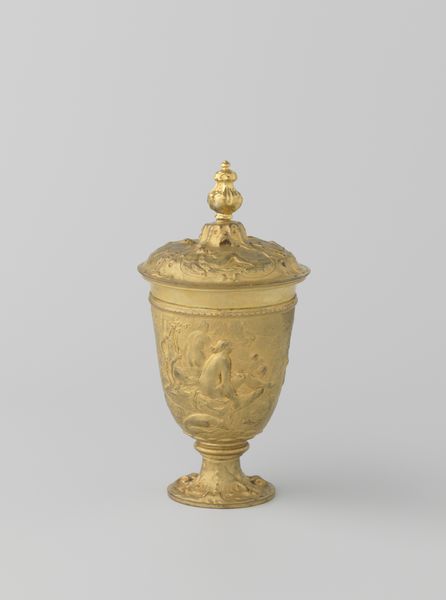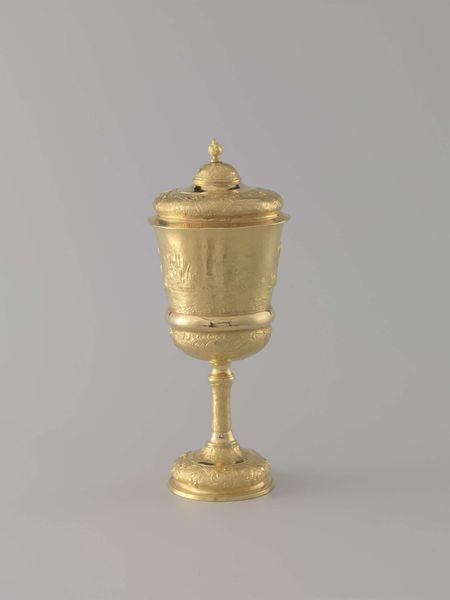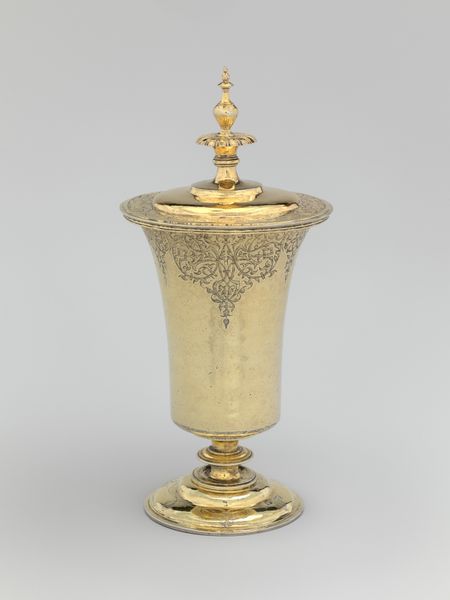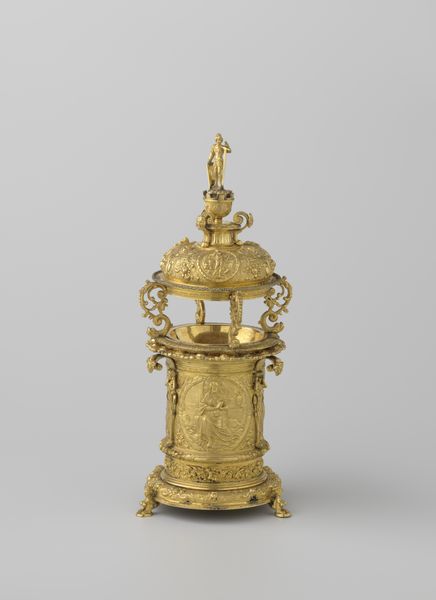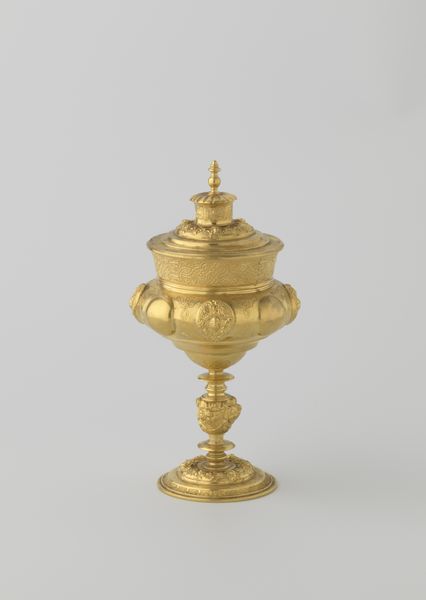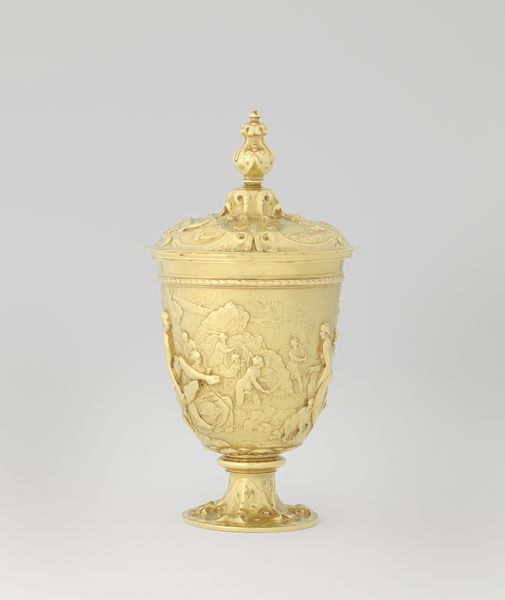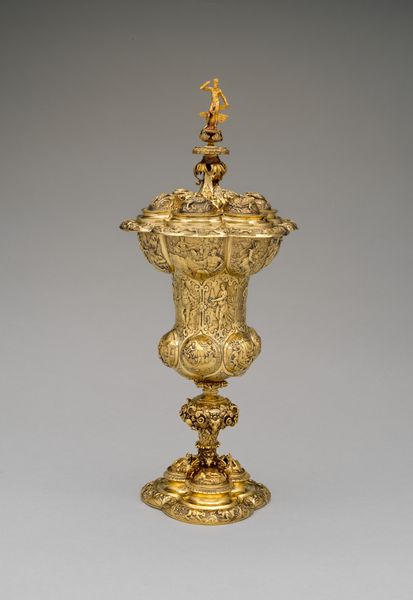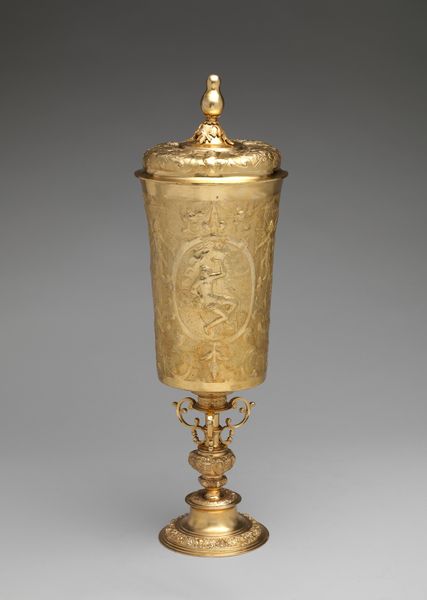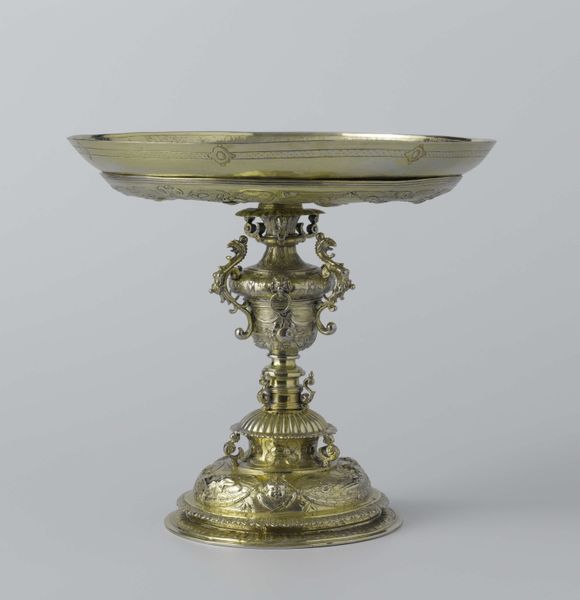
Galvanoplastische reproductie van een beker met deksel met voorstelling van een bacchanaal 1881
0:00
0:00
elkingtonco
Rijksmuseum
bronze, sculpture
#
bronze
#
sculpture
Dimensions: height 35 cm, diameter 14 cm, weight 1266 gr
Copyright: Rijks Museum: Open Domain
Curator: Looking at this shimmering golden object, I'm struck by the density of detail, almost overwhelming. It's an opulent chalice form, yet there's something unsettling in its exuberance. Editor: It is indeed. What we are looking at is a galvanoplastic reproduction of a covered goblet depicting a bacchanal, created around 1881 by Elkington & Co. You'll find it here at the Rijksmuseum. The sculpture employs bronze as its medium. It offers such a fascinating insight into 19th-century interpretations of classical themes. Curator: A bacchanal...the frenzy! The almost violent dance of liberation. Looking closer, those aren't decorative flourishes. They're bodies, tangled together, an ecstatic, perhaps terrifying mass. One wonders what a sculpture like this meant in the 19th-century household or institution which acquired it? Was it simply celebratory? A wink at aristocratic excess? Editor: Bacchus and his followers definitely left their mark on our visual lexicon! Bacchanals, the wild celebrations of wine and freedom, recur across artistic periods. There is the obvious connection with liberation and altered states, of course. But also we have to consider how potent this symbolism might have been within the societal restraints placed on people's personal freedom during that particular period. Perhaps a vicarious, symbolic transgression? Curator: So, its presence speaks not only of celebration, but perhaps of hidden rebellions and yearnings within the strictures of 19th-century society. The galvanoplastic medium itself becomes symbolic; replicating the form but perhaps muting the revolutionary potential of the content. A tantalizing glimpse into the coded anxieties and desires of its time! Editor: Yes, it serves as a beautiful reminder that our understanding of historical context profoundly influences our perceptions of its artifacts. Thanks to this discussion I'm suddenly so drawn to the figure perched on the cup's lid. I see it as more than decorative, but as this sentinel observing the constant performance between then and now.
Comments
No comments
Be the first to comment and join the conversation on the ultimate creative platform.
